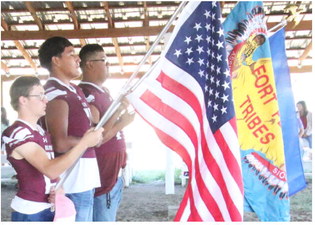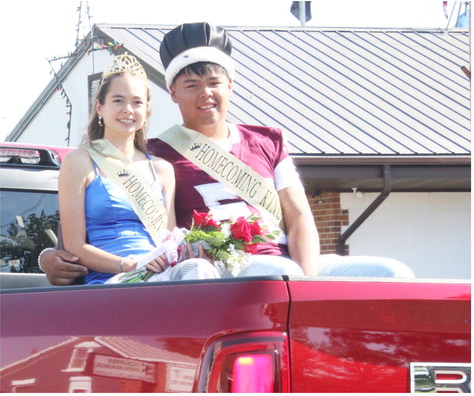Get To Know The Rodeo Terminology And Lingo
Rodeo is a complex professional sport. Though you can watch the sport and hope that a cowboy rides for eight seconds, there is much more behind watching that eight-second ride you might not realize.
For example, you might see the cowboy make his eightsecond ride but then wonder why he received a no score. It could be because he did not “mark out” his horse or perhaps he touched the horse with his “free hand,” both of which mean the cowboy won’t win this “goaround.”
Here are sone rodeo terms to keep in your back pocket to keep you in the know.
Added Money: The money donated to the rodeo committee by the sponsors to attract the contestants to the rodeo for competition.
Arm Jerker: A horse or bull that is really stout and bucks with the power to cause a great amount of pull on the contestant’s arm.
Average: The contestant’s points are combined from all gorounds and the contestant with the highest total points wins the average.
Bail Out: A horse that comes straight up on its hind legs when coming out of the chute, then begins to buck.
Bailing Out: Getting off the animal the best way you can, generally by throwing your weight against the animal.
Barrier: The rope stretched across the front of the box that the contestant’s horse comes out of. In the timed events, the stock is given a pre-determined head start. The amount of head start depends on the arena conditions, and is called the score. The contestant’s horse can not break the barrier before the stock crosses the score line.
Blooper: An animal with very little bucking ability that jumps and kicks or just runs around the arena.
Blows-up: An animal that runs out away from the chute before starting to buck.
Boot the Bull: A term used to mean a particular bull can be spurred. Bull riders are not required to spur their animals, and if they can, they earn extra points.
Breaking the Barrier: When a contestant rides through, or breaks the barrier before it is released. Breaking the barrier adds a penalty of ten seconds to the contestant’s time.
Bronc Rein: A thick rope, 1 ½
to 2 inches in diameter that is attached to the halter of a saddle bronc horse. The rope can be longer than 6 ½ feet, and is used to provide balance, and to give the cowboy something to hold on to.
Bufford: An animal that is easy to ride, rope, or throw down.
Bull Rope: A flat woven rope, no larger than 9/16th of an inch in diameter with a bell attached to it. The rope is wrapped around the bull’s body, just behind the front legs, and then around the cowboy’s hand, to help secure the cowboy to the bull.
Cantle Boarding: When a saddle bronc rider spurs back so far his spurs strike the saddle’s cantle.
Catch as Catch Can: A calf roper is allowed to catch the stock any way he chooses so long as he turns loose of the rope when throwing the loop, and so long as the rope holds the calf until the roper reaches it.
Champion: The rodeo champion is traditionally the highmoney winner in an event for the given season.
Chasing the Cans: The rodeo nickname for barrel racing.
Chute Fighter: A rough stock animal that will not stand still and tries to fight the cowboy before he leaves the chute.
Crow Hopper: An animal that doesn’t buck, but jumps stiff-legged instead.
Dally: A turn of the rope around the saddle horn after the animal has been caught.
Dink: An animal with very little bucking ability that jumps and kicks or just runs around the arena.
Dog Fall: An illegal maneuver in steer wrestling causing all four feet and the head to face in different directions. To receive a time, the cowboy must turn the steer over or let it up and throw it again legally.
Double Kicker: A horse or bull that kicks up with the hind legs, walks on the front legs and then kicks again with the hind legs, before the hind legs touch the ground.
Dragger: A roping steer that is “headed” and stops or does not continue to run after being roped, making it very difficult for the heeler to throw a catch.
Ducks Off: An animal that is running in a forward direction then suddenly moves off to the left or right.
Fading: A bull that spins and slowly gains ground in the direction that he is spinning.
Fair catch: In team roping, the header must catch the steer around the horns, head, or neck. This is also called a legal catch.
Fighting Bull: The kind of bull that you would like to give your mother-in-law. These bulls are almost considered to be head hunters.
Fishing: The expression used to describe a legal catch made by accident, or by flipping the rope, after the initial throw has missed.
Flagman: The official who signals the end of elapsed time in timed events.
Flank strap: A wool-lined strap with a self-holding buckle that is passed around the flank of a bronc or bull. As the stock leaves the chute, the strap is pulled tight causing the animal to buck in an effort to get rid of the strap.
Floater: A horse with little power that jumps with all four feet up and just floats through the air.
Floating: A technique used by some saddle bronc riders that make them appear to be bucked off with every jump of the horse.
Go round: The part of the rodeo that is required to allow each contestant to compete on one head of stock.
Ground money: The money paid when the purse for an event is split equally and paid to all contestants in the event. This is done when all contestants entered in an event fail to qualify.
Hat Bender: A horse or bull that does not buck and just runs around the arena.
Hazer: The cowboy that rides on the opposite side of the steer and keeps the stock from running away from the steer wrestler’s horse.
Head Hunter: A bull that is constantly looking for a twolegged target to hit.
Head Thrower: A bull that tries to hit the cowboy with his head or horns while the contestant is on his back.
Head Wrap: A leather device that is placed around a steer’s horns in team roping to prevent damage to the steer’s head.
Header: The cowboy that ropes the steer around the horns, head, or neck in team roping.
Heeler: The cowboy that ropes the hind legs of the steer in team roping.
High Roller: The term used to describe a horse that leaps high into the air when bucking.
Honda: The eye in the end of a rope that allows the other end of the rope to pass through, forming a loop.
Honker: A really rank and hard animal to ride.
Hooey: The knot used by calf ropers to hold the wraps used to tie three of the stock’s feet together after the calf has been thrown. This knot is known as a half-hitch to most people outside of rodeo.
Hung Up: A rider that is off the animal but is still stuck in the rigging or bull rope.
In the Wall: The term used to describe when a contestant comes off an animal on the inside of the spin.
Jerk Down: After roping the calf, the roper flips the calf straight over backwards.
Jump and Kicker: A bull that jumps and kicks its hind feet in a straight-away action.
Kack: The saddle used by saddle bronc riders.
Legal catch: In team roping, the header must catch the steer around the horns, head, or neck. This is also called a fair catch.
Lounger: A horse that thrusts with its hind feet forward rather than kicking out behind.
Mash Up: A cowboy that clamps with his legs and has no spurring motion.
Money Horse: A horse that when ridden, usually takes the cowboy to the pay window.
Mugger: The cowboy that gets a firm hold on the horse’s neck during the Wild Horse Race. This allows the rider to put the saddle on the horse.
Neck Rope: A rope that is affixed to an animal’s neck in the timed events. It is used to trip the barrier in front of the contestant to assure the animal a
head start.
No time: This means that the contestant has not caught or thrown the stock properly, and does not receive a time for that go-round.
Off Side: The right side of a horse.
Out the Backdoor: When the rider is thrown over the back end of an animal.
Pickup man: The cowboy on horseback who assists the bareback and saddle bronc riders in dismounting from their stock.
Piggin’ string: A small soft rope about six feet long used by calf ropers to tie the animal’s feet together.
Purse: The money paid to the winners of each rodeo event. It equals the total of the added money and entry fees.
Pulling leather: The term used when a saddle bronc rider touches any part of the saddle with their free hand during the eight-second ride. This is also known as “grabbing the apple” and causes the rider to be disqualified.
Rank: A very hard animal to ride.
Re-ride: Another ride given to a saddle bronc, bareback bronc, or bull rider in the same goround when either the stock or the cowboy is not afforded a fair opportunity to show their best. This can be caused by things like a chute-fighting animal, a fallen animal, etc.
Rowel: The circular, notched, bluntly pointed, and freewheeling part of a spur. Any competitor using spurs that will cause a cut is disqualified.
Run Away: A horse or bull that does not buck and just runs around.
Scooter: An animal that pivots on the front feet and scoots the back end around, instead of pivoting on the front feet and kicking the hind feet.
Seeing daylight: The term used when a cowboy comes loose from a bucking animal far enough for the spectators to see daylight between the cowboy and the animal.
Set you Up: A horse or bull that drops a shoulder like they are going to turn or spin in one direction, and then immediately does the exact opposite.
( Editor’s Note: This list of rodeo lingo is reprinted in part from the Miss Rodeo Montana website, http://www.missrodeomontana. com/rodeo/terminology. htm. Visit the link for the full list.)


